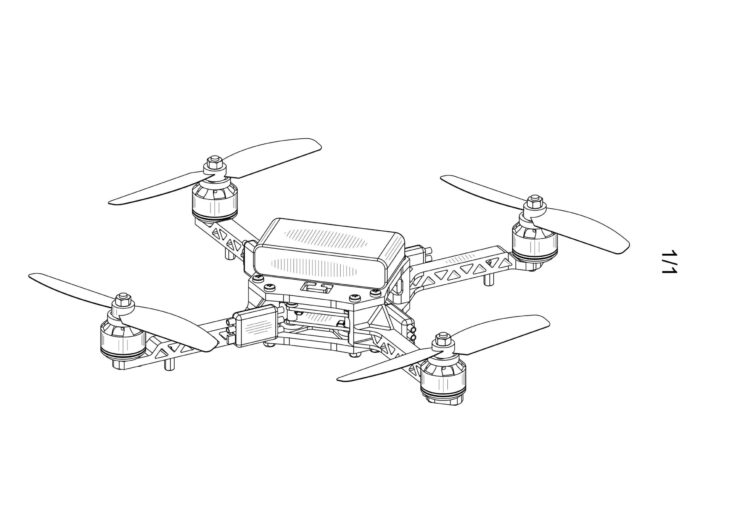As a creative professional, you invest a significant amount of time, effort, and resources into developing your original designs. Whether you’re an industrial designer, graphic artist, or fashion designer, you have a unique vision and a creative flair that sets you apart from others in your field. However, once you’ve created your designs, how can […]

Introduction
Patent drawings are a crucial component of the patent application process. They serve as visual documentation of an invention, providing clarity and specificity to the technical and design aspects of the innovation. Whether you’re an inventor seeking to protect your intellectual property or a professional assisting inventors in this endeavor, understanding patent drawing standards and best practices is essential. In this post, we will explore the significance of adhering to these standards and offer valuable insights into creating effective patent drawings.
Part 1: The Importance of Patent Drawing Standards
- Legal Requirements and RegulationsThe United States Patent and Trademark Office (USPTO) and other international patent offices have specific requirements and regulations regarding patent drawings. Failure to adhere to these standards can result in a delay in the patent approval process or, in some cases, rejection.
- Clarity and PrecisionPatent drawings must be clear, precise, and detailed. They are expected to depict the invention accurately, enabling someone skilled in the field to understand how to make or use the invention. In essence, patent drawings serve as a visual contract, ensuring the invention is accurately represented.
- Protection Against InfringementHigh-quality patent drawings can help safeguard your invention against potential infringement. They provide a visual record of your innovation, making it more difficult for others to replicate or imitate your work.
Part 2: Key Elements of Effective Patent Drawings
- Accurate Depiction of InventionThe first and foremost objective of patent drawings is to accurately depict the invention. This requires a deep understanding of the invention’s design and functionality. Be sure to include all essential components and elements.
- Technical PrecisionPay meticulous attention to detail. Ensure that dimensions, proportions, and angles are accurate. Technical drawings, in particular, demand precision to convey the workings of the invention effectively.
- ConsistencyMaintain consistency in style and format throughout the patent drawings. This consistency helps in creating a coherent and easily comprehensible set of illustrations.
- Legibility and ClarityLegibility is crucial. Use clear lines, appropriate shading, and labeling to ensure that the drawings are easily understood. Employ standard symbols and notations whenever possible.
- Neatness and ProfessionalismPatent drawings should be neat and professional in appearance. Avoid freehand drawings or excessive clutter. Utilize professional drawing software or tools to maintain a clean and organized look.
Part 3: Common Mistakes to Avoid
- Insufficient DetailIncomplete or overly simplified drawings can lead to ambiguity and confusion. Provide enough detail to fully describe the invention.
- Inconsistent Numbering and LabelingEnsure that the numbering and labeling of elements remain consistent throughout the drawings. This aids in comprehension and facilitates cross-referencing with the written description.
- Non-Compliance with Patent Office RequirementsDifferent patent offices have specific rules regarding the format, size, and type of drawings. Failing to comply with these requirements can lead to delays and rejections.
Part 4: Best Practices for Creating Patent Drawings
- Understand Patent Office RequirementsStart by familiarizing yourself with the patent office’s requirements. Different patent offices may have varying rules regarding drawing format, paper size, and other technical details.
- Hire a Professional Illustrator or DraftspersonIf you lack the skills or time to create patent drawings that meet the required standards, consider hiring a professional illustrator or draftsperson experienced in patent drawings.
- Use Appropriate Drawing ToolsInvest in high-quality drawing tools or software to create patent drawings. These tools offer precision and versatility in creating drawings that meet the necessary standards.
- Label and Reference ClearlyEnsure that all elements in your patent drawings are appropriately labeled and cross-referenced to the written description. This helps the reader understand the relationship between the visual and written components of the patent.
- Review and ReviseReview your patent drawings carefully, looking for errors or inconsistencies. It’s advisable to revise and refine your drawings to ensure they adhere to the highest standards.
Part 5: Conclusion
Patent drawings are not mere technical illustrations; they are the visual key to unlocking the intellectual property protection that inventors seek. Adhering to patent drawing standards and best practices is not only a legal requirement but a means to protect and communicate the brilliance of innovative ideas.
Whether you’re an inventor or a professional assisting inventors, understanding and applying these standards and practices is a fundamental step in securing intellectual property rights, defending against infringement, and ensuring the clear and accurate representation of groundbreaking innovations. As innovation continues to shape our world, patent drawings will remain at the forefront of the process, serving as a visual bridge between ideas and legal protection.
An inventive step is a key requirement for obtaining a patent, which is a legal right granted to inventors to exclude others from making, using, or selling their invention for a certain period of time. An inventive step, also known as non-obviousness, refers to a feature of an invention that is not obvious to a […]
Utility patents and design patents are two types of patents granted by the United States Patent and Trademark Office (USPTO). While both types of patents provide protection for inventors, they differ in their scope and requirements. Utility patents protect the functional aspects of an invention, such as how it works or how it is made. […]
Design patents are an essential part of the intellectual property landscape, protecting the ornamental design of a functional item. A design patent grants the owner exclusive rights to the visual appearance of a product, preventing others from making, using, or selling a similar design without permission. Design patent drawings are a crucial aspect of the […]
Now, let’s delve into the importance of accurate patent drawings. Patent drawings are an integral part of any patent application, as they help to illustrate theinvention and provide a visual representation of the claims made in the application. Accurate patent drawings are essential to the success of a patent application, as they can help to clarify […]
Design patent drawings are an essential part of securing a design patent, as they play a crucial role in the overall patent application process. A design patent is a legal protection granted to an inventor, allowing them exclusive rights to their unique and ornamental design for a product. In this blog, we’ll delve deeper into […]








